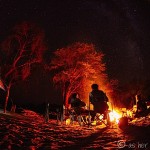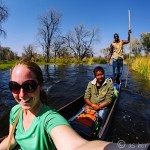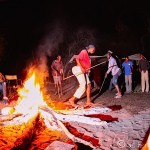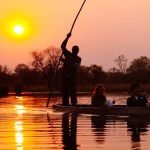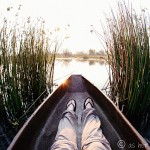This morning’s wake-up call happens at sunrise. After all the wine I drank last night, the last thing I want to do is get out of my warm bed… especially because I’m lucky to even HAVE a bed, after spending the last few months camping in a tent almost every night.
But the wilderness calls.
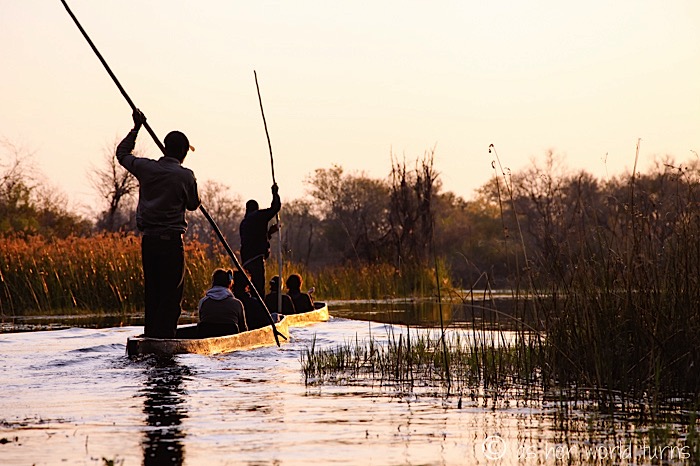
We get into the mekoros and push off, headed for a new (to us) part of the Okavango Delta.

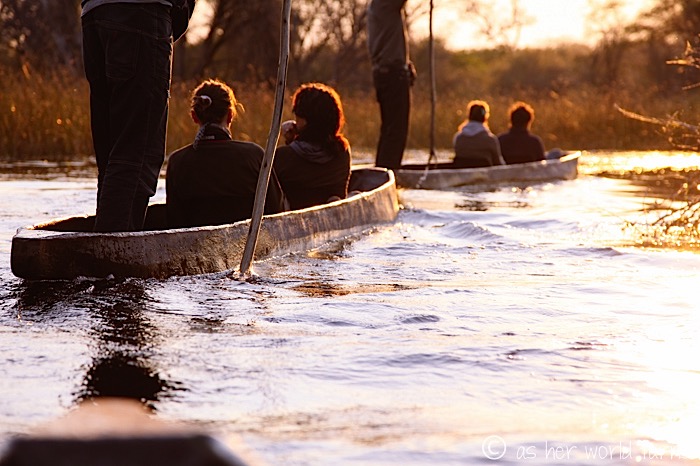


I never tire of photographing the Delta. It’s hard to put my camera away because the light changes so fast and I want to capture every intoxicating angle.
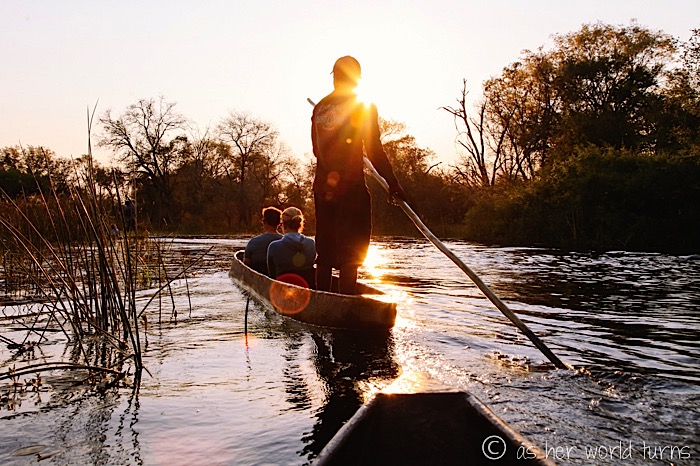
At one point someone glimpses an animal in the bush. Those in the front of the pack pull over to investigate, but it’s already moved off.
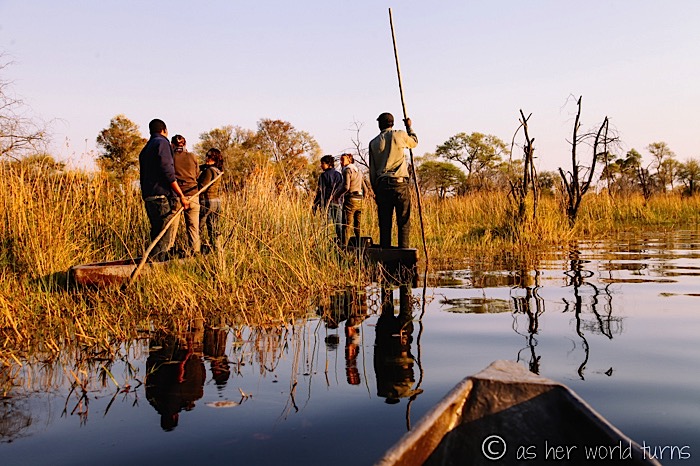
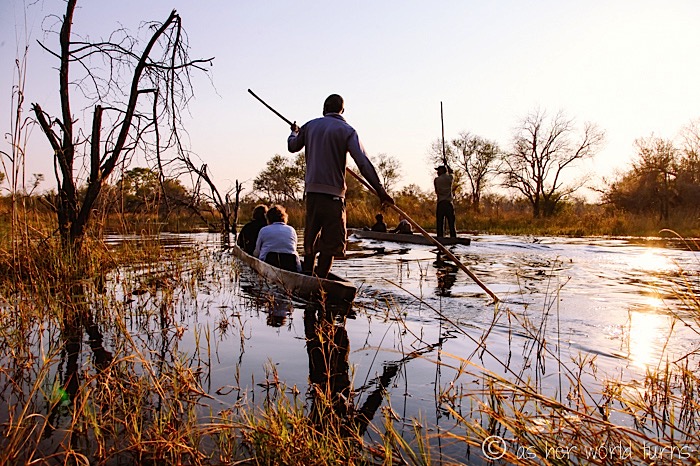
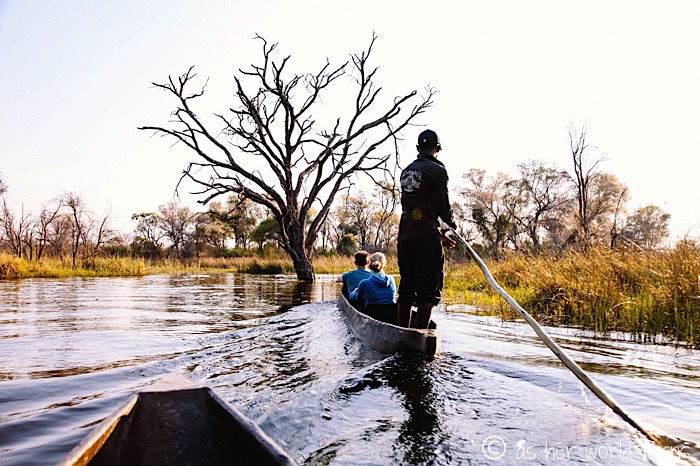
After a good half-hour in the mekoros we reach our destination. Just like with our arrival in the Okavango Delta there is no signage, but the polers know each natural landmark by heart. We set out to explore this strip of land on foot.

Apparently we’re not the only ones on foot…

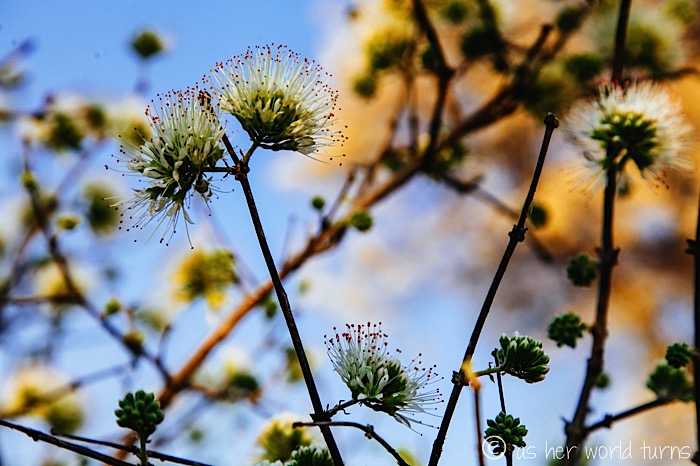
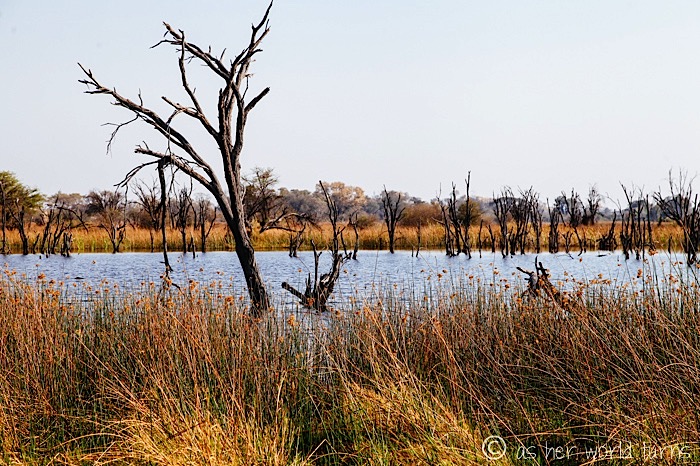
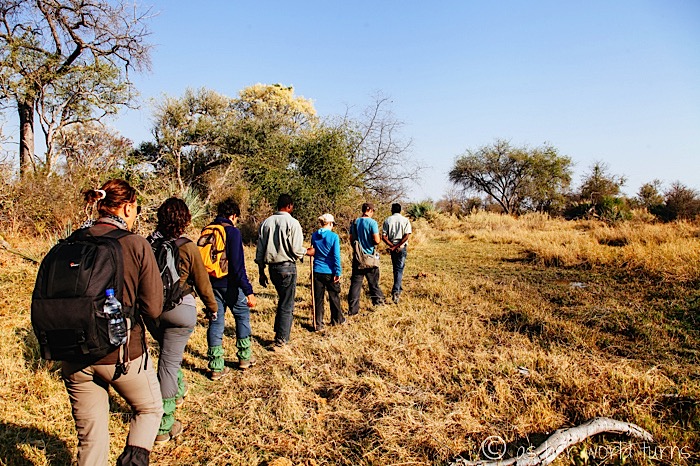
It’s a pleasant walk, and more engaging than our silent elephant vigil the previous evening. All of the wildlife is far away but there are less trees blocking the view.

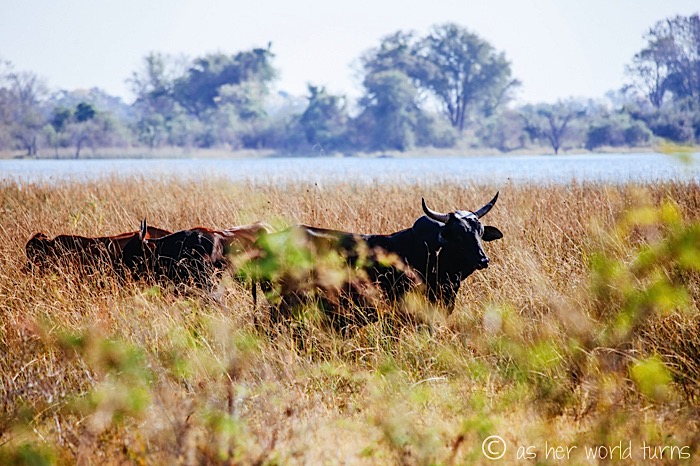
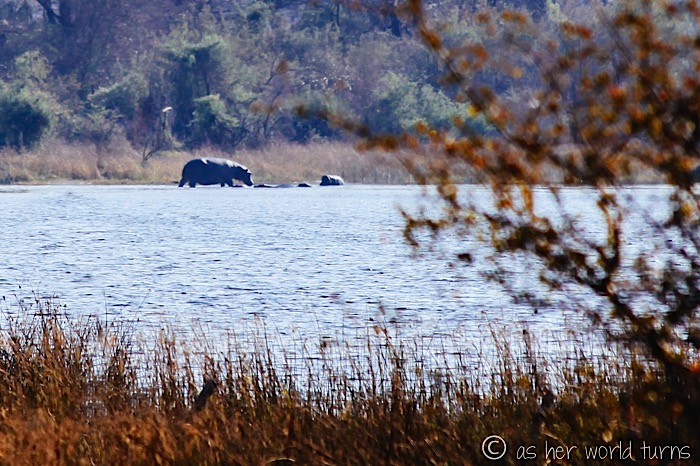
One of the guides offers to navigate us closer to the hippos on the other side of the water. Only trouble is that we’ll have to wade through a stretch of thigh-deep water first. All but two members of our group — myself and Tanya from New Zealand — decide to go for the challenge. Pants come off and the crossing begins.
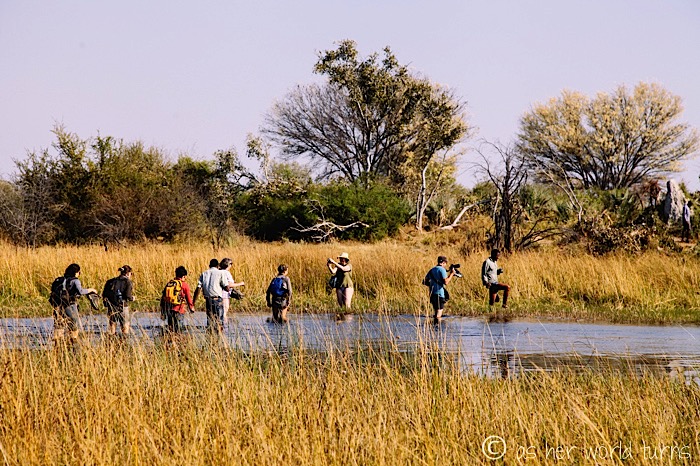
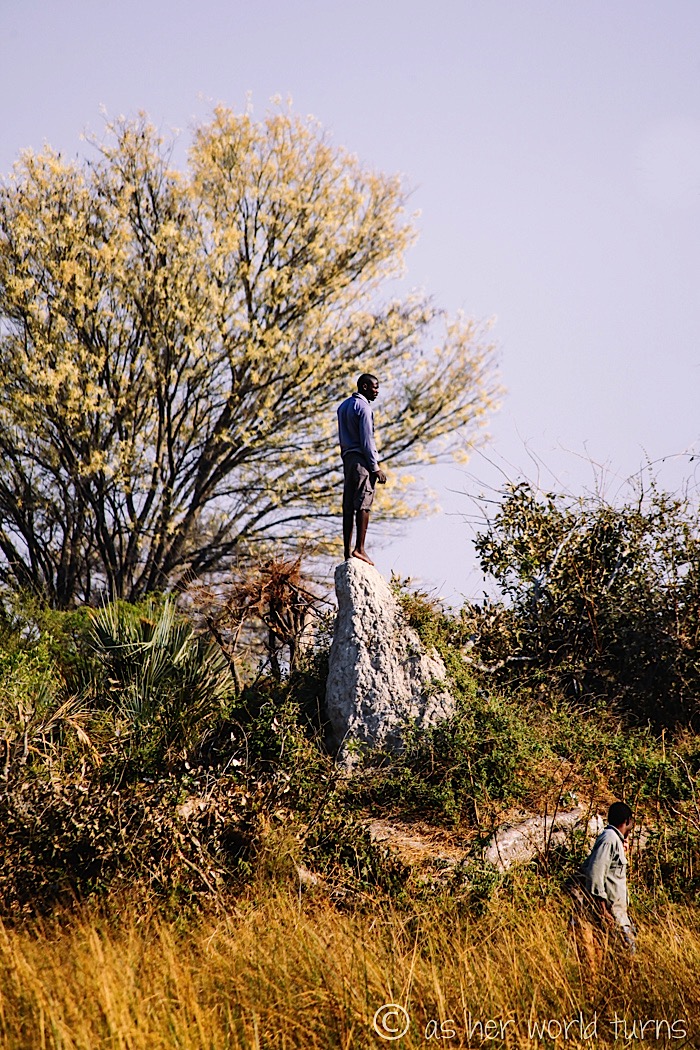
Two of the polers hanging back with Tanya and me offer to show us a different part of the area while we wait. Shortly thereafter we come across remnants an elephant skeleton.
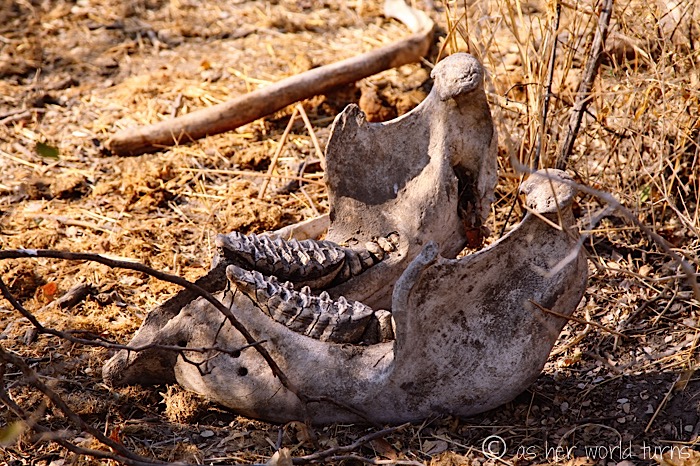
It looks like the bones are all there, picked off clean by scavengers. A bunch of trees lay almost deliberately over the bones in a way that makes me wonder if it’s part of an elephant mourning ritual. I have no idea if that’s a thing they do since elephants knock over trees all the time, but this is compelling:
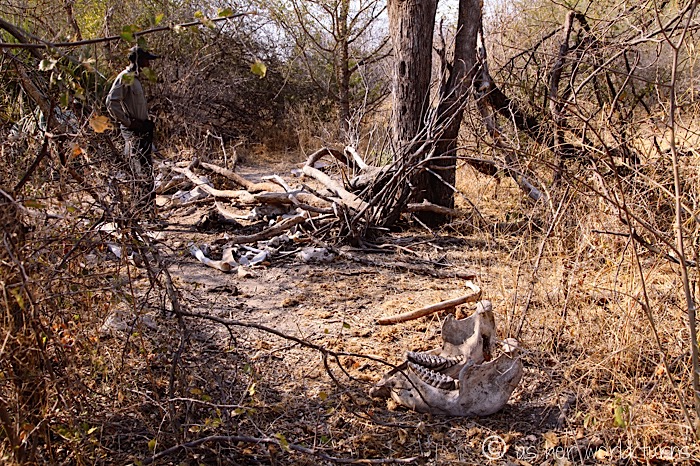
Leg bones and some ribs:
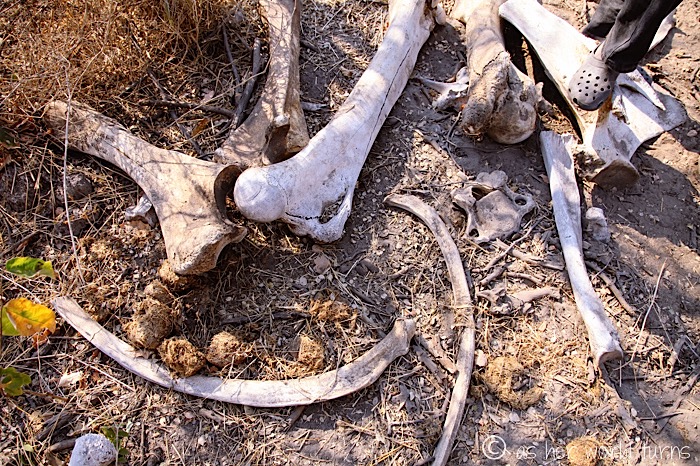
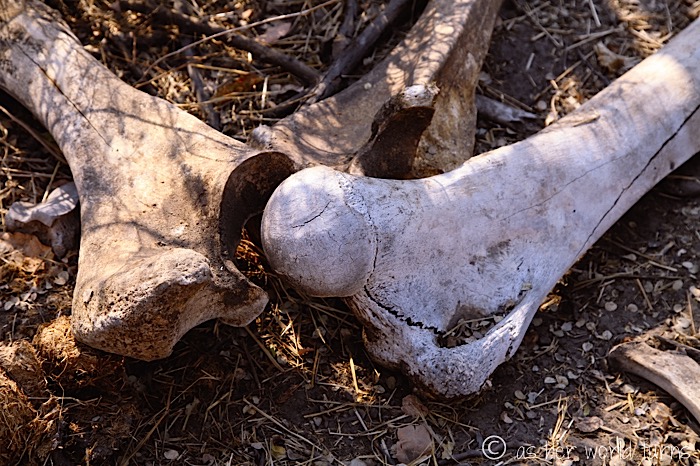
Here’s the elephant skull, not unlike one at our bush camp. I find that throughout Africa they’re oddly used for decorative purposes.

Major thanks to these guys for offering to take us on a little walk. This was much more engaging than waiting for our tour mates to return.

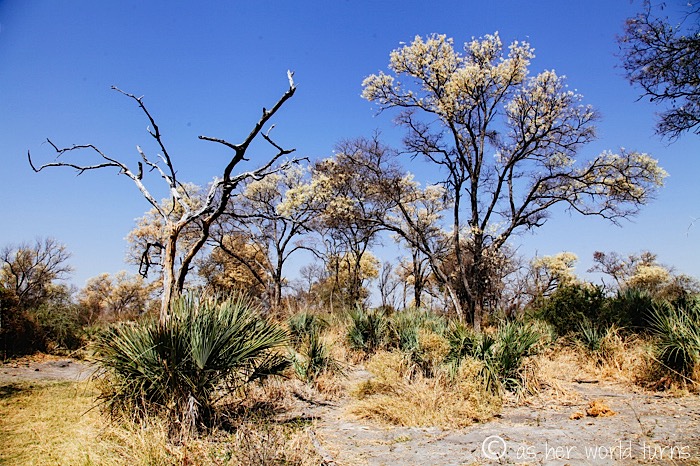
Once our group has reunited, we return to the mekoros and begin our scenic journey back to camp for breakfast.
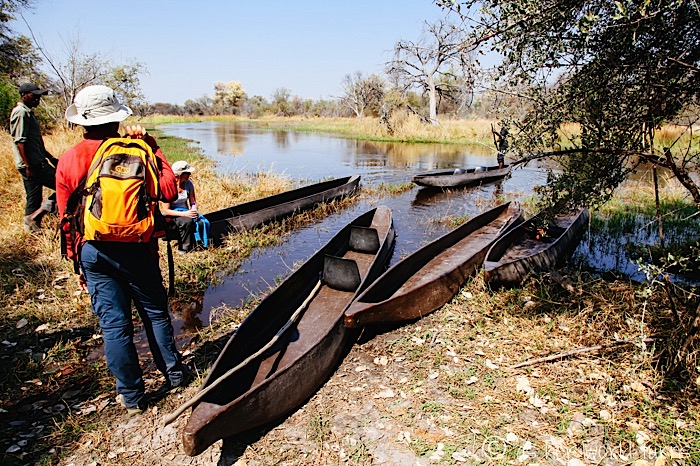
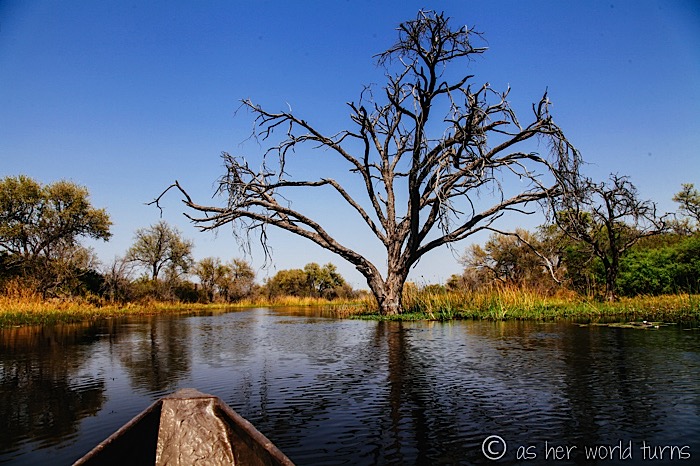
We arrive back at Elephant Bush Camp to find donkeys grazing in the reeds near our tents.

As I mentioned in a previous post, farmers in Botswana let their animals roam free, unconcerned about losing them. These donkeys have bells around their necks so they clearly belong to someone; I have no idea how far they’ve wandered to end up this deep in the wilderness.
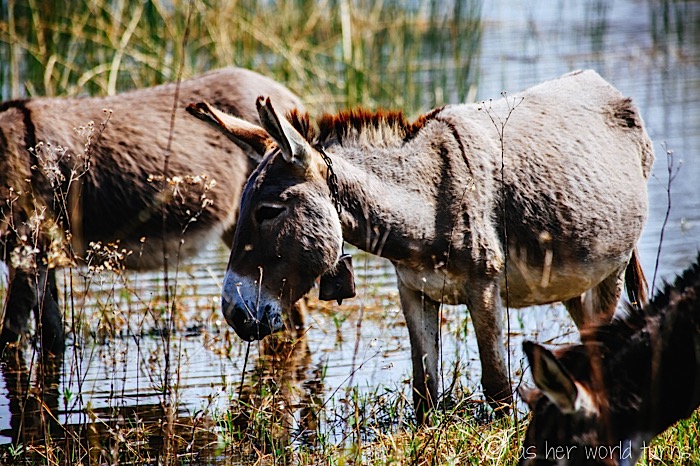

Soliwe has cooked up a delicious breakfast of bacon, tomatoes, and baked beans. I devour this plate while pouring over maps of the area in an attempt to pinpoint our exact location — not easy to do when you’re staying in the middle of a marshland that shifts during every rainy season.
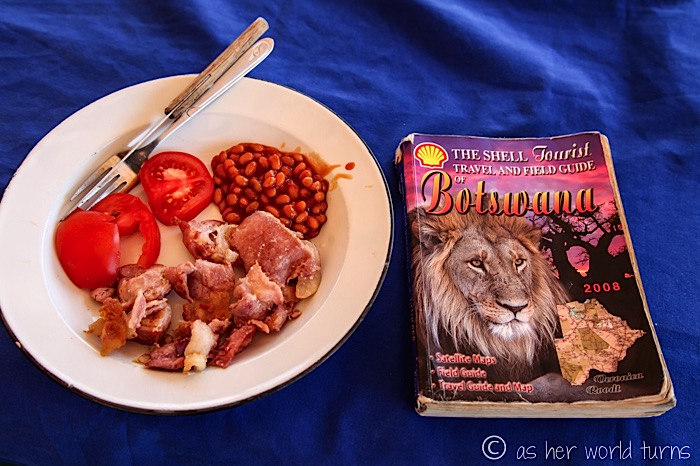
The temperature discrepancy here is incredible — it’s freezing at night and unbearably humid during the day. So we’ll spend the next several hours cooling off in a swimming hole and then napping in our tents. It feels decadent to have this much downtime and I never want to leave.
I visited Botswana on a 30-day Nairobi to Joburg tour with Nomad Tours. They discounted my tour in exchange for blogging and photography; opinions are my own.

